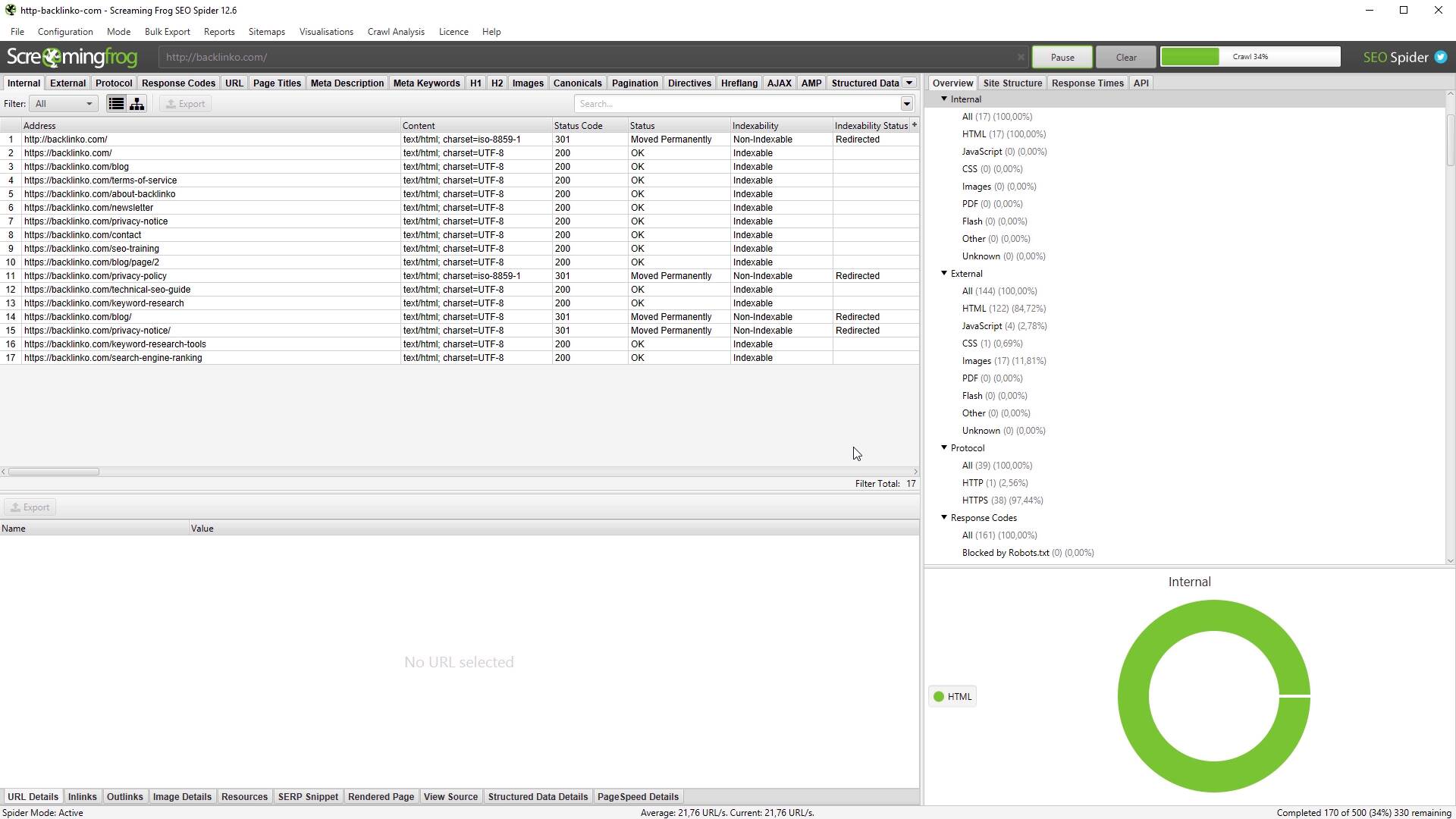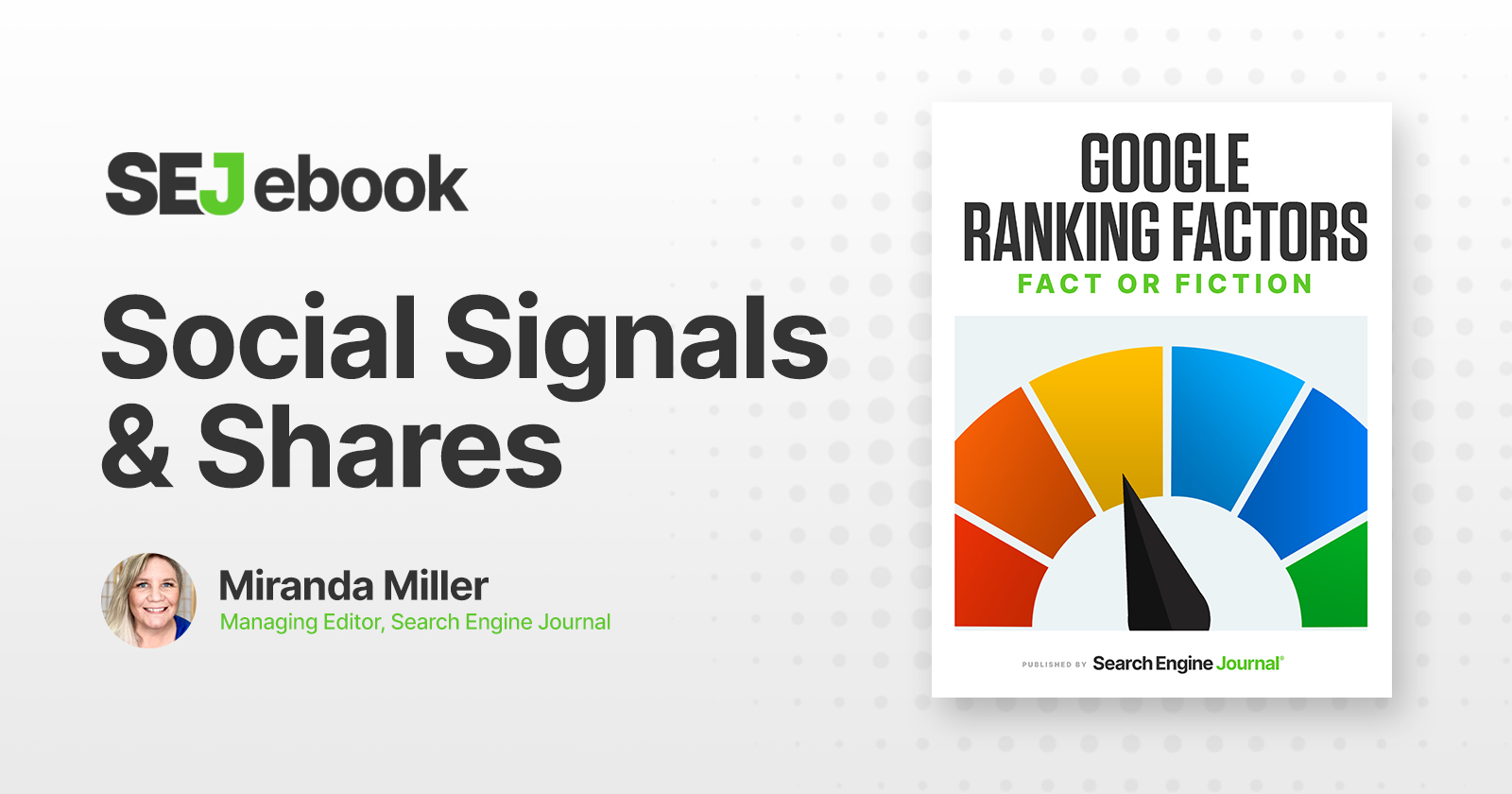Competitor Analysis: Core Principles and How to Conduct One
In the fast-paced realm of digital marketing, understanding and outperforming your competitors is not just an advantage, it’s a necessity. Competitor analysis, a critical skill for any marketer, provides insights that can be the difference between leading the market...

In the fast-paced realm of digital marketing, understanding and outperforming your competitors is not just an advantage, it’s a necessity.
Competitor analysis, a critical skill for any marketer, provides insights that can be the difference between leading the market or lagging behind.
This guide, rooted in Backlinko’s expert approach to digital marketing strategies, delves into the nuts and bolts of effective competitor analysis.
From leveraging SEO tactics to understanding audience needs, we unpack the methods that will not only help you understand your rivals but also enable you to outmaneuver them strategically.
Get ready to transform your approach to competition, armed with tools and insights that put you ahead in the digital marketing game.
Let’s dive in.
Key Takeaways
A competitor analysis involves collecting data about your competitors to identify their strengths and weaknesses and improve your marketing strategy. Any type of business can benefit from conducting a competitor analysis. Before you begin a competitor analysis, you need to be sure of who your target customer is. The next step of a competitor analysis involves identifying your organic and paid search competitors. You also need to determine if they’re classed as direct, indirect, or replacement competitors. Once you’ve identified your competitors, you need to analyze their content strategies, backlink profiles, technical SEO, and paid media strategies.The Importance of Competitor Analysis in Marketing
Before we discuss how to carry out your competitor analysis, let’s take a look at exactly what it is and why it’s so beneficial.
What is Competitor Analysis?
A competitor analysis, commonly referred to as competitive analysis, is a strategic and systematic approach to identifying competitors within your industry and analyzing their strengths and weaknesses.
It involves assessing your competitors’ product offerings, pricing strategies, distribution channels, customer service, innovation, marketing strategies, and overall market positioning.
This in-depth analysis serves as a valuable benchmark. It helps you grasp not just the strategies and tactics your competitors employ but also allows you to pinpoint your own strengths and weaknesses relative to each competitor.
Armed with this well-rounded view, you can strategically position your business for success in the competitive arena.
A competitive analysis can be broad or specific. You can delve into every aspect of your competitors’ business or focus on just one area. For example, you might choose to concentrate solely on analyzing their marketing strategy.
However you decide to go about it, you need to ensure your approach is customized to align with the needs and goals of your business.
Who Can Benefit from an Analysis?
Simply put, anyone who wants to gain a better understanding of a market and the competitive landscape will benefit from a competitor analysis.

Business Owners and Executives
Competitive research helps business owners and executives:
Identify opportunities and threats posed by competitors Make informed decisions Optimize resource allocation Stay ahead of industry trends Proactively respond to competitive challengesAs a result, these actions contribute to business growth and sustained success.
Product Marketing Teams
Conducting market research can greatly benefit product marketing teams by helping them:
Identify unique features and benefits of their products Understand how competitors position and present their products Tailor their marketing messages to highlight distinct advantages of their products Recognize market gaps for potential product innovation Understand customer preferences Adapt strategies to differentiate products effectively in the marketBrand Marketing Teams
Gathering market competitor insights will help brand marketing teams:
Understand how competitors position and present their brands Develop strategies to create a distinct and compelling brand image Identify unique selling points to differentiate the brand Adapt messaging to address customer perceptions and preferencesContent Marketing Teams
Content marketing teams will be able to use the insights gained from conducting competitor research to:
Tailor content to address customer needs based on competitor insights Identify content gaps and opportunities in the market Adapt their messaging to differentiate content from competitors Learn from competitors’ successful content strategies Improve overall content effectiveness and relevance in the marketSEO Professionals
SEOs can use these competitive benchmarks to help them:
Identify keywords competitors are ranking for Uncover link-building opportunities Discover content gaps to provide valuable and unique information Improving website structure and user experience based on their competitors’ successesPay-Per-Click (PPC) Specialists
A competitive analysis can help PPC specialists:
Identify effective strategies used by competitors in their ads Adjust bidding strategies based on competitors’ performance Improve ad creatives and messaging to stand out in the marketSocial Media Teams
The insights gained from an analysis allows Social media teams to:
Identify successful strategies used by competitors on social platforms. This includes analyzing content themes and engagement tactics that resonate with the target audience. Uncover the various social media platforms their competitors leverage Discover opportunities for unique and engaging social content Adapt posting schedules and frequency based on their competitors’ performanceSales Teams
Competitor analysis data will help Sales teams:
Determine their competitors’ strengths and weaknesses Identify their competitors’ unique selling points Anticipate customer objections, and stay informed about market trendsThis helps them tailor their pitches, address customer concerns effectively, and position their products or services competitively. As a result, it can enhance sales outcomes.
Identifying Your Target Customer
Before delving into a competitor analysis, it’s crucial to clearly understand your target audience. Without this insight, you’re essentially navigating in the dark. To help clear things up, let’s dive into why it’s so important. Plus, we’ll cover the best ways to identify your target audience, but first, let’s discuss the difference between a target market and a target customer.
Target Market vs. Target Customer
A target market is a fairly broad group of customers you hope to sell your products or services to. For example, if you sell gym wear, your target market could be fitness enthusiasts.
A target customer is a more specific segment of your target market. So, your target customer within your target market could be a fitness enthusiast aged 25 to 35, who lives in Los Angeles.

The process begins by identifying your target market and then pinpointing more specific target customers within that market.
To pinpoint your target market, you must assess the key features and benefits of your products or services. Delve into understanding the problems they solve and the value they offer. Next, identify the broad groups of customers who are likely to find these qualities appealing.
By identifying your target customers, you can efficiently allocate resources to analyzing the competitors that engage with your specific audience.
How to Identify Your Target Customer
So, now you know why it’s important to identify your target customer before carrying out a competitor analysis, but how do you do it?
1. Start With Your Existing Customers
If you’re already selling products or services, you should have insights into your existing customer base, which can significantly inform your understanding of your target customer. Analyzing your current customer data, including demographics, preferences, and purchase behavior, provides a foundation for identifying and refining your target customer profile.
Additionally, gathering feedback directly from your current customers proves invaluable in gaining deeper insights.
A highly effective method to achieve this is by initiating surveys with your customer base. You can do this via email, text, or call to ask customers who have purchased to complete a survey. You can also add survey buttons and links to certain pages on your site or read customer reviews.
Furthermore, you should leverage social media platforms as an additional channel to connect with your current customers. You should create posts or direct messages inviting them to participate in surveys or share their thoughts and experiences.
2. Gather Demographics Data With Google Analytics 4 (GA4)
To collect demographic data on your target audience, you can utilize GA4. This tool offers comprehensive insights, allowing you to get a deeper understanding of your audience.
After you log in, click “Reports”, “User attributes”, and then “Demographic details”. You’ll now see a graph representing the number of users who visited your site from different countries.

Scroll down, and you’ll see the total number of “Users” for each country, as well as the number of “New Users” (users who interacted with your site for the first time).

To view different types of demographic data, click the “Country” button in the table and you’ll get a dropdown.

For example, we chose “Interests”, and this is what the tool gave us.

In this case, the data provided above clearly indicates that a significant portion of our audience is located in the US and Canada, with a keen interest in technology, media, and entertainment.
By applying different filters, we can also see data about the audience’s:
Age Gender City Region Language3. Dig Into Your Social Media Analytics
Another way to identify your target customer is to explore your social media analytics. This helps you gain insights into the behaviors, preferences, and demographics of your audience.
Semrush’s Social Tracker tool allows you to analyze your followers, mentions, and engagement levels on multiple social media platforms.

This helps you identify the type of customer who interacts with your site via social media and also reveals the social media channels that generate the highest engagement and traffic for your site. You can then focus on these channels when analyzing your competitor’s social media strategy.
4. Create a Target Audience Profile
Once you’ve collected the data, it’s time to put it to use by creating a profile of your ideal target customer.
This should include information like:
Age Gender Location Occupation Level of education Interests Hobbies Income Platform usageIt’s essential to recognize that you may have various types of target customers. For example, an e-commerce store could have a distinct target customer for each product or service they offer.
The more data you can collect about your different types of target customers before you start a competitor analysis, the better.
How to Conduct a Competitor Market Analysis
After you identify who your target customer is, it’s time to begin your competitive research.

Before we begin, here’s a bit of advice.
A competitor analysis can easily become overwhelming if you try to do everything at once. It’s always best to start fairly small and break it down into manageable chunks. Instead of analyzing 50 competitors, start with a small number (even one will do) and gradually increase the scope of your analysis over time. Identify what your goals are before you start your analysis. Ideally, your main objective should be conducting sufficient research to take actions that positively impact your business. Store your competitor insight data in a spreadsheet, which should be a living document that you return to periodically and update with new information.OK, let’s get into how to conduct a competitor analysis.
1. Identifying Your Main Competitors
First things first, it’s time to figure out who your main competitors are.

When identifying your competitors, you need to break them down into three categories:
Direct Competitors
Direct competitors are businesses in your industry or local area that sell products or services very similar to the ones you offer. They also have the same target audience as you and are of a similar size and scope to your business.
Example:
McDonald’s and Burger King are direct competitors in the fast-food market. Both chains offer a range of fast-food items such as burgers, fries, and beverages. They target a similar customer base and compete for market share in the quick-service restaurant industry.
Indirect Competitors
Indirect competitors are businesses that offer different solutions to the same customer needs or cater to the same target audience. Unlike direct competitors, indirect competitors do not provide similar products or services but fulfill a similar customer need or serve the same overall market.
Example:
You and your competitor both run travel websites. However, you focus on offering luxurious beach vacations while they specialize in adventure vacations – like hiking trips. Even though you’re both trying to attract people looking for vacations, the key difference is that you provide different kinds of trips.
Replacement Competitors
Replacement competitors offer alternative or substitute products or services to what your business offers.
Example:
Your business: Specializes in selling traditional incandescent lightbulbs. Replacement competitor: Specializes in selling energy-efficient LED bulbs.The replacement competitor is considered as such because, although they offer a different type of product, their offerings serve as a substitute or replacement for the traditional incandescent lightbulbs sold by your business.
Customers looking for a solution to their lighting needs have the option to choose between your traditional bulbs and the energy-efficient LED bulbs offered by the replacement competitor.
The competition arises because both businesses are aiming to satisfy the same fundamental customer need, illumination, albeit through different types of products.
How to Identify Your Competitors
Whenever we need to identify our competitors, we primarily use Semrush, but there are other ways you can get an idea of who your industry competitors are. These include:
Customer Feedback: Reach out to your existing customers and inquire about the other businesses they considered before choosing yours. Make sure to ask for their opinions on which other businesses they perceive as providing a similar service or product. Market research: Consult your sales department to understand the businesses they frequently encounter during research within your target market. Their on-the-ground insights can contribute valuable information. Google Search: Conduct a Google Search using your target keyword (e.g., “running shoes”) to identify competitors. Analyze the first page of the search results to pinpoint key players in your industry.You’ll also want to gain a comprehensive understanding of your organic, paid, and local competitors.

Several features within the Semrush tool can help you.
Identify Your Organic Search Competitors
These are sites that compete with you in the SERPs for non-paid traffic. They use SEO strategies to rank as highly in the SERPs as possible.
The easiest way to identify your organic competitors is to use Semrush’s Organic Research tool.

Type in your domain, hit “Search”, then click “Competitors”.

You’ll see a chart representing your site and your main competitors who rank for the same organic keywords as you. The X-axis shows you how many keywords your competitors are ranking for, and the Y-axis shows you how much monthly traffic they receive.

Scroll down, and you’ll see a long list of competitors with several bits of data like competition level (how closely a site is competing with you for the same keywords) and common keywords (the number of keywords both you and your competitor are ranking for).

Now, just because these sites are competing with you for the same organic keywords doesn’t necessarily mean they’re direct competitors, they could be targeting a different audience to you.
Here’s an example to give you a better grasp:
Imagine there’s a website that writes a blog about advertising. They want to attract people interested in “online marketing strategies.”
Now, let’s say you have a blog about SEO, and you also want to attract people searching for “online marketing strategies.” Even though you’re both targeting the same keyword, you’re not necessarily in direct competition.
Here’s why: The first website is focused on advertising, so their audience is interested in learning about advertising. On the other hand, your blog is about SEO, and your audience is more interested in SEO topics.
So, even though you target the same keyword, the sites serve different interests and are not considered direct competitors.
The best way to determine whether the sites in your list are direct, indirect, or replacement competitors is to visit each site and analyze their offerings. Here, we clicked on “neilpatel.com”.

A brief review of the blog content indicates that it shares similarities with ours and is geared toward the same audience. This categorizes it as a direct competitor.
Find Your Paid Search Competitors
Paid search advertising, or Pay-Per-Click (PPC) advertising, involves businesses bidding on keywords. Ads from the highest bidders are then displayed in the SERPs when users search for these keywords.
To identify your paid search competitors, you can use Semrush’s Advertising Research tool. You’ll see the same graph you get in the Organic Research tool but with paid traffic and keywords instead.

Below, you’ll get a table of your paid competitors.

As with the Organic Traffic table, you can see the number of keywords you have in common with your competitors. This is a good indication of how closely you’ll be competing with them.
Remember, to split your competitors into different types, you’ll need to examine the site content, and their products or services to see what they offer. This may sound like a lot of work, but as we said earlier, you only need to start small.
Identifying Local Competitors
Your local competitors are the businesses in your area that offer a similar product or service. You may already have several local businesses in mind that you consider to be your competition. However, your local competitors might not be exactly what you expected when it comes to SEO.
Local SEO competitors are businesses that rank prominently in the SERPs for keywords related to your products or services within a specific geographical area. These businesses are your direct competition for visibility in local search results and aim to attract local customers searching for relevant products or services.
The most effective method to pinpoint these competitors is through Google. For example, if you operate a law office in Seattle, users searching for such services in your area will likely use long-tail keywords (three or more words) with location modifiers specific to the region, such as “lawyer in Seattle.”
Type this into Google and see which businesses appear in the local search results. One of the most important things to pay attention to is the Map Pack. This is a group of top-ranking local businesses that are displayed prominently in the SERPs.

2. Analyzing Your Competitor’s Content Strategy
Once you’ve identified your competitors, it’s time to analyze their content strategy.

The goal is to identify the components of their strategy that are performing well and those that are not. By doing so, you can replicate the successful elements and take advantage of the opportunities created by the shortcomings in the weaker aspects of their strategy.
The key things to analyze are:
Content Types and Formats
Identify the various kinds of content competitors create, like blog posts, videos, infographics, or podcasts.

Additionally, analyze the formats they employ to present information within these content types. For example, blog post formats may include how-to guides, listicles, or thought leadership articles.
This analysis will help you understand the diversity of their approach and allow you to tailor your content strategy to meet similar or unique audience preferences.
Content Quality and Relevance
Assess the overall quality of their content. Look at factors such as relevance, depth, and level of expertise. Evaluate how well their content meets the users’ search intent and addresses the needs and interests of their target audience.

The insights you gain will allow you to learn from your competitors’ successes or capitalize on their failures. By identifying what works well in their content, you can incorporate similar strategies into your own. Similarly, understanding where their content falls short provides an opportunity to avoid similar pitfalls and tailor your approach for better results.
Content Frequency
Analyze how often they publish new content and the consistency of their posting schedule. This can provide insights into their content production capabilities and audience engagement strategy.
By evaluating your competitors’ content frequency, you can learn from their success in maintaining a consistent posting schedule, potentially improving your own content planning. On the flip side, identifying gaps or irregularities in their posting schedule presents an opportunity to capitalize on potential shortcomings and enhance your own content consistency for better audience engagement.
Content Distribution Channels
This involves recognizing the platforms or mediums competitors use to promote and share their content, which may include social media, email newsletters, or external platforms.
This analysis will help you to learn from their success in reaching audiences through specific platforms. It also provides insights into potential gaps or missed opportunities. This offers you a chance to capitalize on alternative channels for broader content reach and engagement.
Keywords
Analyzing the keywords your competitors prioritize provides insights into what their audience is actively searching for, allowing you to align your content with similar user intent. Identifying the keywords they are targeting will help you spot industry trends and topics that resonate with your shared audience.
You’ll also be able to identify content gaps that will help you tailor your strategy to address topics that may be underserved in your niche. Additionally, analyzing how your competitors utilize keywords in their meta titles, page headings, and main content can offer valuable insights. This analysis will guide you in optimizing your content effectively or seizing opportunities where your competitors may fall short.
Backlink Profile
By analyzing the quality and quantity of backlinks pointing to their content, you will get insights into the authority and credibility of their content in the eyes of search engines.
3. Assessing Your Competitor’s Backlink Profile
A backlink is a hyperlink from a page on one site to a page on another site. Acquiring backlinks from high-authority sites that align with your niche is a great way of increasing the authority of your site.

When analyzing your competitor’s backlink profile, you need to assess the quality of their links rather than focusing solely on the quantity.
Analyzing your competitors’ backlink profiles is important because sites with robust and diverse link profiles are likely to rank highly in the SERPs. By analyzing their strategies, you can identify backlink opportunities for your site, and boost your rankings and traffic.
If you’d like to learn more about building links, check out our comprehensive guide on link-building strategies.
Here’s how to check up on your competitors’ backlinks.
You can use Semrush’s Backlink Analytics tool.

On the “Overview” page, you will see:
Referring Domains: This is the total number of referring domains pointing to your competitor’s domain.
Backlinks: This is the total number of backlinks your competitor has earned.

As mentioned earlier, the quality of the backlinks is more important than the quantity. You’ll need to assess the quality of referring domains that are linking to your competitor’s pages. To do this, click on “Referring Domains”.

On the “Referring Domains” page, select:
Active Set the AS score to 40-100 Click on “Add filter” and select “Follow”
As you can see in the image above, there are over 3.5k high-authority referring domains linking to this competitor’s domain.
Now, if you want to check the actual backlinks pointing to your competitor’s pages, click on “Backlinks”.

Here you can see the source pages, their AScore, and the pages they are linking to on your competitor’s site.

4. Evaluating Your Competitor’s Technical SEO
Analyzing the technical aspects of your competitor’s site is crucial to understanding how well their site performs. You then compare this data to your site and identify areas where you’re outperforming them and where you need to improve.
Here’s why conducting a technical analysis of your competitors’ sites is essential:
Identify Strengths and Weaknesses: Analyzing the technical aspects of your competitors’ sites can reveal their strengths and weaknesses in terms of website structure, page speed, mobile optimization, and other technical elements. Understanding these aspects helps you identify areas where you can surpass them. User Experience (UX): Technical SEO influences the user experience. By analyzing your competitors’ technical elements, you can gain insights into how user-friendly their websites are. This understanding can guide improvements to your site’s UX. Crawling and Indexing: Examining how well your competitors’ websites are crawled and indexed by search engines provides insights into their overall search engine visibility. This can reveal potential issues or opportunities for improvement on your site.You can use the info you gather to avoid common mistakes, prioritize tasks, and replicate successful strategies. Ultimately, this can lead to better UX, increased traffic, and improved rankings.
5. Exploring Your Competitor’s Paid Media Strategy
Simply put, analyzing your competitor’s paid media strategy helps you:
Learn what works in your industry Stay updated on market trends Benchmark your performance Discover new advertising channels Improve your creativity and messaging Adapt to changes Enhance your targeting strategiesAll of this ensures your advertising efforts remain effective and competitive.
Here’s how to go about analyzing your competitors’ paid media strategies.
Keyword Research
You need to identify the keywords your competitors are bidding on. This will help you uncover gaps in your PPC keyword strategy.
Analyze Historical Performance
You should analyze your competitors’ click-through rates, ad spends, and conversion rates. This will help you determine if their tactics are worth replicating to improve your site’s PPC results.
Ad Placement Analysis
You need to identify where your competitors are placing their ads. Do they tend to favor specific sites, the SERPs, or social media platforms like Facebook? This provides valuable insights into the effectiveness of the different channels they use, their overall market presence, and their strategic focus. Armed with this knowledge you can optimize your advertising approach based on successful practices and focus on platforms that yield better results.
Ad Copy Analysis
A key part of any PPC competitor analysis involves assessing your competitors’ ad copy. You need to analyze the ways they position their product or service and how they promote their unique selling points (USPs).
When analyzing ad copy, it’s useful to ask questions like:
What types of CTA do they use? How do they incorporate keywords into their ad copy? Do the color schemes in their ads align with those of their brand? Do they use graphics or videos to drive clicks?Landing Page Analysis
Optimized landing pages are one of the most important elements of a successful PPC campaign. If they contain effective CTAs, enticing content, and are well laid out, they can greatly increase your conversion rates.
So, it’s important to dig into your competitors’ landing pages to identify their strengths and weaknesses. Key things to analyze include:
Relevance: Does the landing page align with the ad copy that led users to it? To maintain user trust and increase conversions, there must be consistency between the content of a landing page and the ad that leads to it. Visuals: How do your competitors use images, graphics, and videos on their landing pages? Are they high-quality and relevant? Do they support the overall message of the page? Headline: Pay attention to how clear and compelling the headline on the landing page is, and if it quickly communicates the value proposition of the product or service to the user. The value proposition tells the user the benefits and value of a product or service. For example, “Save time and money with our user-friendly project management software designed for small businesses.” Social proof and trust indicators: Keep an eye out for social proof signals like reviews and user ratings, and trust signals like security badges, as these can enhance credibility and user trust.Track Performance and Return On Investment (ROI)
Keeping tabs on your competitors’ performance and ROI helps you to set goals and KPIs for your site.
Semrush’s Advertising Research tool enables you to effortlessly monitor key performance and ROI metrics, such as CPC and average positions.

Paid Social Media Analysis
Analyzing your competitors’ paid social media strategies will help you identify the ad copy and promotions they use to attract customers within your target audience. The insights you gather will offer ideas that you can integrate into your own paid social media campaigns.
One way of doing this is to use the tools that are built into social media platforms, like Meta Ads Library. This allows you to see all of your competitor’s ads that are currently active on Facebook or Instagram. All you need to do is choose a location and the type of ads you want to see and then type in a keyword or a competitor’s domain.

Then, you’ll be taken to a page with the ads your competitor is running. For each ad, it tells you when it was launched and which Meta platforms it’s running on and you can view the ad itself.

However, this doesn’t provide insight into the success of competitor’s ads. To gauge their effectiveness, we need to uncover metrics such as ad spend, impressions, and share of voice. You can use Semrush’s AdClarity tool to gain these insights. The tool allows you to track your competitors’ ad performance metrics on social media platforms including Facebook, Instagram, TikTok, and X (formerly Twitter).

Real-World Competitor Analysis Example
OK, you now know what information you need to uncover during your competitor analysis and how to conduct one. To make it even clearer, we’re going to walk you through a real-world example where we’ll carry out our own competitor analysis.
For this example, we’re going to identify a single competitor for “Backlinko.com”, and focus on them for the analysis.
As we already went into detail about how to identify your target customer, we’ll be skipping this step. We’ve already used the steps laid out above to determine that our target customer lives in the US, is aged between 18 to 34, and is interested in SEO but isn’t necessarily an SEO professional.
Step 1: Identify Your Competitor
Using Semrush’s Organic Research tool, we can pull up a list of the main competitors (we’ll be focusing on organic competitors in this example).

In the list above, you can see that Backlinko has 7.3K keywords in common with “wordstream.com” and 13% “Competition Level”. By quickly scanning the site, we can also see that we create similar types of content and target the same audience.
This makes “wordstream.com” a great choice for our competitor analysis.
Step 2: Content Analysis
During the next phase of competitor analysis, we’re going to dig into WordStream’s content strategy.
First, identify the types of content they publish. The easiest way to do this is to simply have a look at the WordStream site and make a note of all the different content formats.
You can also analyze WordStream’s meta titles to get an understanding of the content they create. For this, we’re going to use Screaming Frog SEO Spider.

This is a tool that crawls domains and gives you valuable info about them. The free version allows you to crawl up to 500 URLs, which is perfect for smaller websites.

By analyzing these meta titles, you can start to build a picture of the types of content WordStream is creating. We can see titles include phrases like “How to” and “25 ways”, which indicates WordStream is creating how-to guides and listicles.
When analyzing your competitor’s content strategy, you should identify how frequently they publish content. To do this, type site:your competitor’s domain into Google, click “Tools”, and click “Anytime”.

Next, choose a date range from the dropdown menu. We went with “Past month”.

This will give you an idea of the amount of content your competitor publishes a month.

Next, you should take a look at the pages driving the most traffic to your competitor’s site. To do this, you can use the “Organic Pages” report in Semrush’s Organic Research tool.

There are two things you can learn from this report.
These insights will provide content ideas. Identify the topics most relevant to your site and start creating content for them. If you already have content covering these topics but the pages aren’t getting a lot of traffic, you need to optimize them to start drawing in higher levels of traffic.Next, you need to assess the quality of the content your competitor is producing. You need to look at the depth of the content and its relevance. Is the information well researched and does the content match search intent?
Next, evaluate the levels of E-E-A-T (Experience, Expertise, Authority, and Trustworthiness) your competitor demonstrates within their content.
For example, do they demonstrate experience by including hands-on videos within their how-to guides?
Or do they communicate their expertise by including info about the authors of their articles?
Here’s a look at an article on Wordstream.

Step 3: Backlink Analysis
Next, we’re going to analyze WordStream’s backlink profile. There are many different elements of this we could analyze, but we’re going to focus on four main things during this competitor analysis:
Number of backlinks: The total number of backlinks pointing to WordStream’s site. Quality of backlinks: The number of high-authority referring domains linking to WordStream. Top-linked pages: The number of pages that have the most backlinks pointing to them. This indicates the quality and popularity of their content.Using Semrush’s Backlink Analytics tool, we can see that WordStream has a total of 10.6M backlinks and 87K referring domains.

Now, let’s check out how many of those links are coming from high authority referring domains.
To do this, click on the number under “Referring Domains”.
You’ll only want to pay attention to the domains with the highest Authority Score (AS), so click “AS” at the top-left of the table to view the list in descending order. You can also view the number of backlinks your competitor receives from each domain.

Underneath the domain name, Semrush tells us what category the site falls into. By looking at this table, we can determine the diversity of sources for WordStream’s backlink profile, too.
Next, we want to analyze the pages receiving the most backlinks. Just click on the “Indexed Pages” to get the report:

If your site has pages covering the same topics as your competitors, you should compare the backlinks you’ve received with those of your competitor’s pages. This comparison provides insights into whether you’re outperforming them or falling short in terms of backlink performance.
If your site lacks pages covering these topics, prioritize the most relevant topics and create superior content.
Then, identify the referring domains linking to your competitor’s pages, and proactively reach out to the webmasters of these domains and ask for a link.
Step 4: Technical SEO Analysis
There are a huge number of technical SEO elements you can analyze during a competitor analysis. we’re going to focus on site performance, and analyze Wordstream’s Core Web Vitals, page load speeds, and check if their site is mobile-friendly.
Core Web Vitals
Core Web Vitals are a set of metrics that measure a site’s performance in terms of providing a positive UX. The Core Web Vitals metrics are:
Cumulative Layout Shift (CLS): Measures how visually stable a page is by analyzing how much the content of the page shifts around as it loads. First Input Delay (FID): Measures the time it takes between a user first interacting with a page and the browser starting to process this interaction. FID will be replaced by a new metric called Interaction to Next Paint (INP) in March 2024. Largest Contentful Paint (LCP): Measures how long it takes for the largest content element on a page to become visible to the user.All of these metrics are important for providing a good UX, and they’re also included in Google’s ranking factors, which is why it’s worth analyzing them.
The quickest way to do this is by using Google’s Page Speed Insights.
First, you’ll see your competitor’s Core Web Vitals for the mobile version of their page.

Click on the “Desktop” tab to see the metrics for the desktop version.

Analyzing your competitor’s Core Web Vitals is useful as it can serve as a benchmark for the performance of your site.
When you analyze several of your competitors, you can build a picture of the average performance levels for sites within your niche, and ensure that your site performs to this level or above it. This will result in a better UX and could improve your rankings.
Page Load Speeds
Next, we’re going to use Page Speed Insights again to check up on WordStream’s page load speeds. The metric to pay close attention to is the “Speed Index”. This shows how long it takes for the visual elements on the page to be fully rendered.

Ideally, you want this to be 2-3 seconds or lower. So, this page is pretty slow.
The key takeaway here is that by analyzing your competitor’s page speed, you can compare it to yours. This indicates whether you’re outperforming them or if improvements are needed.
It’s important to note that the “Speed Index” metric is not representative of the entire site, it only pertains to the specific URL you paste in for analysis.
Mobile-Friendliness
Now, we need to check whether WordStream’s site is mobile-friendly or not. As Google has retired its Mobile-Friendly Test, we’re going to use Bing’s Mobile Friendliness Test Tool instead.

You can see that Wordstream’s page is mobile-friendly.
The primary reason for conducting this analysis is to benchmark your site against your competitors. For instance, if the pages on your site aren’t mobile-friendly, it signifies that you are lagging behind competitors. In the realm of online marketing, sometimes a single factor can determine whether you have an advantage over your competitors or vice versa.
Step 5: Paid Media Analysis
In the final stage of this competitive analysis, we’re going to take a look at WordStream’s paid media strategy.
PPC Keyword Research
The first thing we want to do is gain some insights into WordStream’s PPC keywords using Semrush’s Advertising Research tool. The tool allows you to view metrics such as:
Position changes Search volume CPC Traffic
This analysis will reveal the keywords your competitor is excelling in and those where they are struggling. Take note of their success with certain keywords and the areas where they are not performing well.
If you and your competitor are targeting the same keywords, compare your ad performance to theirs. This will enable you to identify areas where you are outperforming them or falling short.
By analyzing the keywords in which your competitor is finding success, you can attempt to replicate it by analyzing their ad copy. On the other hand, by analyzing the keywords they are not performing well for, you can optimize your ad copy and outperform them.
Another effective way to improve your PPC strategy is to identify the paid keywords your competitor is targeting but you aren’t.
To do this, we’re going to use Semrush’s Keyword Gap tool.

Here, we get a list of paid keywords that WordStream is targeting but our site isn’t.

This analysis will give you insights into their PPC strategy and their target audience.
Additionally, analyzing the CPC for the keywords they are targeting provides valuable insights into their ad budget. This understanding will help you determine the budget required to compete effectively with them.
Competitive Analysis Templates and Tools to Guide Your Research Journey
As you can see from this real-world example, Semrush has many features that can aid you in conducting an in-depth competitor analysis, but you need somewhere to store all of the info you gather.
Don’t worry, we’ve got you covered. This free spreadsheet template, courtesy of Semrush, allows you to store your competitor analysis data in one easily accessible place.
Conclusion
Analyzing your competitors is vital for gaining insights into their digital marketing strategies, so you can learn from their success and enhance your own.
It also highlights areas where your competitors are not performing well, presenting opportunities for you to capitalize on their shortcomings and outperform them.
But remember, the key is to start small. Don’t overwhelm yourself by analyzing a ton of competitors at once.
The objective should be to gain insights that you can act on immediately to improve your marketing efforts and stay ahead of the competition.
If you found this guide useful, then check out our in-depth guide on SEO Competitor Analysis.

 JaneWalter
JaneWalter 























.jpg)








